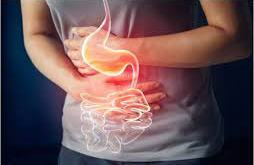



ACID PEPTIC DISEASE OR PEPTIC ULCER DISEASE
• Peptic ulcer refers to an ulcer in the lower oesophagus, stomach or duodenum, in the jejunum after surgical anastomosis to stomach, and in the ileum adjacent to a Meckel's diverticulum.
• Incidence-IO% of all adult males.
• Approximately 90% of peptic ulcers are caused by Helicobacter pylori infection or nonsteroidal anti-inflammatory drug (NSAID) use.
Aetiopathogenesis
• Heredity
• Strong family history with gastric ulcers, but less strong family history with duodenal ulcers.
• Acid pepsin versus mucosa! resistance.
• Other risk factors include smoking and alcohol consumption.
Helicobacter pylori
• Majority of gastric and duodenal ulcers can be attributed to NSAIDs and H. pylori.
• H. pylori also plays a role in the development of gastritis, MALT (mucosal-associated lymphoid tissue) lymphoma (most common site is stomach), gastric adenocarcinoma, gastritis and dyspepsia.
• H. pylori is a gram-negative bacillus that produces mucosa! damage.
• In a developing country, nearly 80% of persons are colonised with it by the age of 20 years. Other risk factors for acquiring H. pylori infection include poor socio- economic conditions and family overcrowding.
• Transmission occurs following oral-oral or faeco-oral route.
Aetiology of Acute and Stress Ulcers
• Aspirin
• Head injury, burns, severe sepsis, surgery and trauma lead to peptic ulceration known as stress ulcers.
• Head injury causes ulcers by gastric hypersecretion (Cushing's ulcer).
• Burns and shock produce ulcers by reflux of duodenal contents
Clinical Features
• Peptic ulcer is a chronic condition with a natural history of spontaneous relapses and remissions lasting for decades or even life.
• The most common presentation is that of recurrent abdominal pain that has three notable characters:
• Localisation to the epigastrium
• Relationship to food
• Periodicity ·
• Epigastric pain
• Pain is referred to epigastrium and is so sharply localised that the patient will localise the site with one finger (pointing sign). It is usually burning in character.
• Hunger pain
• Pain occurs on empty stomach (hunger pain) and is relieved by food or antacids.
• Night pain
• Typically, the pain wakes the patient from sleep around 3 am and is relieved by food, milk or antacids.
• Pain relief
• Pain is usually relieved by food, milk, antacids, belching or vomiting.
• In some patients with gastric ulcer, food may precipitate the pain.
• Periodicity (episodic pain)
• Pain occurs in episodes, lasting 1-3 weeks every time, three to four times a year. Between episodes patient is perfectly well.
• In the initial stages, the episodes are short in duration and less frequent. As the natural history evolves the episodes become longer in duration and more frequent.
• Patients are more symptomatic during winter and spring.
• Relapses are more common in smokers than in non-smokers.
• Other symptoms
• Water brash (excessive salivation), heart bums, loss of appetite and vomiting.
• Anorexia, nausea, fullness, bloating and dyspepsia.
Complications
• Upper gastrointestinal bleed • Perforation • Gastric outlet obstruction • Gastric malignancy • Pancreatitis
Investigations
• Double contrast barium meal may show the ulcer as a crater or as a deformed duodenal cap.
• Endoscopy can visualise the ulcer. Typical location is duodenal bulb and lesser curvature of stomach. A biopsy can be taken from a gastric ulcer to rule out malignancy (10% of gastric ulcers are malignant) and H. pylori infection.
• Tests for H. pylori.
General Measures
• Avoid smoking • Avoid aspirin and NSAIDs • Alcohol to be moderated
• No special dietary advice though patients should avoid any foods that precipitate symptoms
TREATMENT AT DR. SOHAN LAL CLINIC
The integrated POLYCLINIC facility offers patients to select their treatment either from the Department of Homeopathy or from the Department of Medicine.
We provide scientific, research-based, and professional services to people across the world, aiming to achieve the highest success rate.
